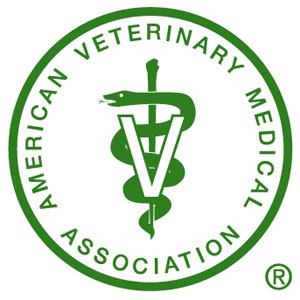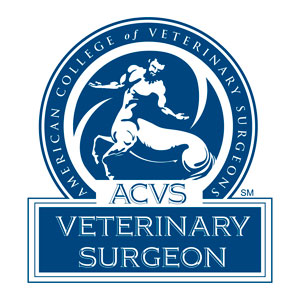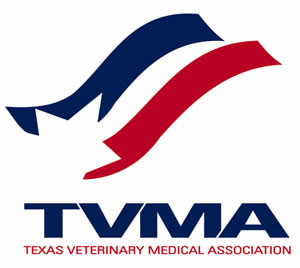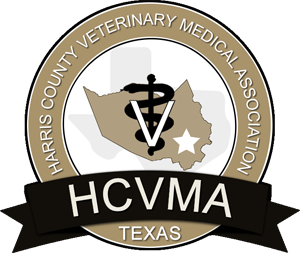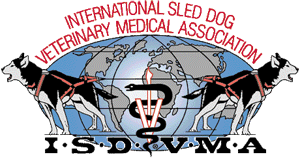What Is Hip Dysplasia?
Hip dysplasia (HD) is abnormal joint laxity (looseness) of the hip joint. Hip dysplasia is a common cause of hind limb lameness. Medium to large breed dogs that are very popular in the USA, such as Labrador Retrievers, Golden Retrievers, and German Shepherds, all can be affected by hip dysplasia. Although more prevalent in these breeds, hip dysplasia can occur in dogs of any breed and size including Mixed Breeds, as well as in cats. Over 100 dog breeds have a total hip replacement that was performed by Dr. William Liska to treat their dogs hip dysplasia successfully.
The normal hip joint is a “ball and socket” joint. The “ball” (head of the femur) normally fits tightly in the “socket” (acetabulum) on the pelvis side of the joint. During growth until adulthood, the bones, ligaments, muscles, and other structures that cross the joint must develop at the same pace. When this occurs properly, and in the presence of gravity, the joints develop normally without any laxity (looseness). The normal adult shape of a ball and socket are a result of all factors, including normal forces of the ball in the socket, being within “normal” limits during development.

With a hip dysplasia, the bones and soft tissues develop at a disproportionate pace. This results in bones that do not have a normal shape. Because the bones do not have a normal shape, the ball and socket do not have a tight "fit" into one another. This adds to the joint laxity (looseness). Joint laxity stretches tissues that surround the joint. This leads to inflammation, pain, abnormal wear of the joint surfaces, and lameness.

The cause of hip dysplasia is multifactorial. Genetics, diet, hormonal influence, and environmental factors are all believed to contribute to the development of hip dysplasia. However, without abnormal DNA, the other factors likely have minimal or no influence. Extensive research has been conducted, and will continue, on the canine genome to identify the exact genetic code that is abnormal.

What are the symptoms of Hip Dysplasia?
Most dogs with HD have their first symptoms by 1 year of age – some as early as at 6 months. The symptoms are often subtle at first, with no obvious limp or holding the leg up off the ground. Common observations include:
- a “bunny hop” gait with both hind feet advancing at the same time instead of striding
- hesitance to jump or go up a flight of stairs
- premature tiring during exercise
- content to “observe” rather than “participate” in vigorous play time
- mild limp when rising after rest
- weight shifting off of one or both hind feet while standing to eat or drink

- slightly arched back as a result of weight shifting to the front legs
- apathetic about exercise and play time.
As with any joint problem, the body’s response is an attempt to stabilize laxity if it is present. When hip dysplasia is present, the degree of laxity varies from one dog to another, and there are times when one side is affected more than the other side. The laxity eventually results in secondary osteoarthritis (OA) at some point in life.
In secondary osteoarthritis, the inflamed tissues surrounding the joint thicken with “scar tissue” as part of the process in early arthritis. Some young dogs will actually improve as a result of Mother Nature’s course. Unfortunately, the “improvement” is usually temporary and almost always limited to symptoms. In almost every joint with HD that is abnormal at 1 year of age or less, the arthritic changes will progress. Dog may be able to cope with the pain at certain stages, but eventually, lameness or other symptoms will again be present. This time interval between symptoms may never happen, or if it does, the duration can be quite variable depending on the severity of the HD present initially.

The dogs go through stages of coping with hip dysplasia pain as the graph illustrates. Symptoms can wax and wane, but eventually are constant. Expert advice should be sought to determine appropriate treatment options.
How is the Diagnosis of Hip Dysplasia made?
Radiographs are necessary to confirm the diagnosis of Hip Dysplasia. Before acquiring radiographs, the patient history, physical examination, and orthopedic examination are completed to determine if other causes of hind limb lameness are present. Your dog will undergo a comprehensive examination process.

What can be done if Hip Dysplasia is the diagnosis?
Once the orthopedic exam and radiographs are completed, appropriate treatment options can be discussed. More than one option is almost always feasible. The global perspective of each individual animal (age, breed, gender, body weight, body condition score, general health, intended function in life, presence or absence of concomitant problems, client constraints, and personal decisions) must all be considered by the Veterinary Surgeons and animal owner to select the treatment option which best fulfills all needs and expectations.
ALL options should be discussed along with the advantages and disadvantages while keeping the animals’ well-being in mind. The best outcome available is the restoration of successful and completely pain-free joints with normal biomechanical function. This means that the dog will lead a healthy, happy normal life and be able to walk normally with no pain or lameness. This successful outcome is achieved with Total Hip Replacement.
Dogs (and cats) recover much faster and better from this surgery than do humans. In fact, dogs (and cats) often do “too well, too soon” so owners must be diligent to “slow their dog down” during recovery. While all animals go through an anticipated recovery and healing period, dogs are typically walking on the new hip the day after surgery with only a minimal or mild limp.
How is Hip Dysplasia Treated?
Conservative/Medical Management
Conservative / medical management may be a viable and effective treatment option for some dogs with mild hip dysplasia. This option is usually attempted a when the diagnosis of mild hip dysplasia and/or osteoarthritis is first made. A detailed discussion of medical management / pain control is extensive.
Frustration and disappointment usually set in when chronic, advanced, severe, or bilateral hip dysplasia is present. Pain management is NOT the treatment of choice for dogs or cats with chronic, advanced, moderate, severe or bilateral hip dysplasia and/or osteoarthritis.
Costs accumulate rapidly with long term use of pain and inflammation management products and services that merely temporarily mask severe symptoms. Prolonged symptomatic relief (more than 1 month) may just delay the inevitable while the arthritis continues to get worse the dog continues to suffer, and it could potentially preclude a successful solution that was feasible earlier in life.
Over time, these costs often far exceed the cost of readily available permanent and successful surgical treatment. - Total Hip Replacement.

Dogs do not have to experience pain over a long period of time when successful treatments are available. This dog had painful hips for many years and the "cost" was quality of life as well as monetary. NSAIDs = Non-Steroidal Anti Inflammatory Drugs.

Hip Dysplasia advanced beyond the point where a Total Hip Replacement is not possible due to extensive bone being worn away along with acetabulum.
Total Hip Replacement (THR)
Total hip replacement (THR) is the gold-standard surgical treatment for dogs and cats with moderate to severe hip dysplasia (HD). This means that it is the most effective, permanent, and successful treatment available allowing dogs (and cats) to resume a healthy, happy, and normal life.
Total hip replacement can be performed successfully on dogs (and cats) of any size between 3.5 to 180 pounds and any age once skeletal maturity is reached (usually at about 9-10 months of age) ,although total hip replacement has been performed in dogs 6 months of age in some circumstances. Total hip replacement creates a pain-free joint immediately and restores function that mimics normal function. A Total Hip Replacement results in a fully functional, pain-free joint. The joint itself is pain free immediately because both the “ball” and “socket” are replaced. There is, of course, some discomfort right after the surgery which is controlled with pain medication.
Timing of Total Hip Replacement surgery is made on an individual basis. If symptoms are present which require chronic (more than 1 month) medication to control, surgery is indicated. If no other health problems exist, there is NO GOOD REASON for a prolonged delay of surgery.
The most painful hip is the first to receive a THR if both hips are arthritic and painful and causing lameness. Both hips are replaced in over 50% of the dogs that are painful on both sides, but the surgeries are almost always staged about 6 weeks to several months apart.
The implants will not “wear out” in companion animals as they potentially can in humans in 15-30 years because animals do not live long enough for that to happen. The materials used to make the implants are the same as materials used in humans. If a total hip replacement is inevitable, the animal might as well enjoy a pain free joint and a normal life as soon as possible.
What do the Implants look like?
Total Hip Replacement implants include three components:
- Cup (acetabular implant) that is implanted in the pelvis
- Femoral stem with a neck that is implanted inside the femur
- Femoral head that is placed on the neck on the stem
Total Hip Replacement implants are manufactured using the same strict specifications as those made for humans.
Cementless implants (also called “press fit”) have become the gold standard during the last 10 years. These implants are manufactured by BioMedtrix in Whippany, New Jersey, and are referred to as the BFX (Biological Fixation) System. Cementless implants used in medium and large dogs have largely replaced “cemented” implants that were held in place with bone cement. However, the technology for both methods of implant fixation is still excellent. Cementless implants eliminate one variable - bone cement - and therefore are a generational upgrade from the technique that was used for decades in humans. Both methods continue to be used in humans and animals. With the cementless implants, the implant is stable immediately and becomes permanently even more stable when bone “grows into the implant” (called osteointegration) during the first 6 weeks +/- after surgery.
Cemented implants are used in small dogs (usually less than 25 pounds) and in cats. This technology has also been proven to be highly successful. These implants are manufactured by BioMedtrix in Whippany, New Jersey, and are referred to as the CFX (Cement Fixation) System The availability of both cemented and cementless implants provides surgeons great versatility to accommodate each individual animal according to their needs. It is highly advantageous to be experienced using either fixation method which can even allow for “hybrid” combinations of implants. Using this technology, cemented and cementless implants can be used on the femoral stem and cup, respectively, or visa versa, depending on factors such as bone quality, bone shape, severity of the arthritis, animal size, and other technical considerations.
What is required of a highly skilled surgical team?
The Surgeon
Skilled experienced surgeons do not hesitate to recommend and perform Total Hip Replacement surgery if the indications for surgery are present and no other problems of higher priority exist that would preclude surgery. For example, more than one problem can be present at the same time in animals. If hip dysplasia with arthritis and pain is present, a hip replacement is indicated. However, surgery will be postponed, or not recommended, until other problems that exist are resolved. Such problems could include anterior cruciate ligament injury in the knee, neurological problems, dermatitis or infection in other parts of the body, diabetes and other major medical maladies, major organ (such as heart, liver, kidneys) dysfunction, and cancer.

Dr. William Liska has performed over 2,000 joint replacement procedures. He has been the leader in numbers of received THR referrals and procedures performed in the State of Texas for many years, and is among the leaders in the country and internationally. He is certified by the instrumentation and implant manufacturer (BioMedtrix LLC, Whippany, NJ) in all hip and knee replacement procedures currently available.
Surgery Team
A skilled surgery team must be assembled to perform Total Hip Replacement surgery on a “routine” basis. The surgeon must have extensive experience (most are Board Certified by the American College of Veterinary Surgeons and be open to discuss how many Total Hip Replacement procedures he / she have performed as the Surgeon-in-Charge (SIC). The surgery scrub team must also be experienced with many procedures in their resume. Anesthesia and surgical pain management must be totally controlled by an individual completely dedicated during the entire procedure to constant observation of monitors including respiration, EKG, blood pressure, and core body temperature.

Surgery Facility
The surgery facility must meet the highest standards for joint replacement surgery for animals. These standards follow guidelines established for human operating rooms. Proper instrumentation availability and instrumentation sterilization is an absolutely mandatory requirement to be performed by highly trained and experienced hospital staff members. 24 hour patient care is mandatory during the postoperative hospitalization period with a technical staff well informed about the specific needs of animals undergoing Total Hip Replacement surgery.
Presurgical Planning
Presurgical planning begins before the surgery day. High resolution digital radiographs are used to determine implant sizes needed for the surgery. Computer software designed to accurately measure the animal’s anatomy must be used to match the bone sizes with one of the over 16 different implant sizes to assure a perfect fit. Implant sizes a grouped for large dogs that are either cementless or cemented, and for small dogs and for cats.
Animals are screened for remote sources of infection such as dental disease, ear infection, dermatitis, allergies that incite local infections, and urinary tract infections. Lab work is performed to be sure no underlying or subclinical undiagnosed problems exist that could complicate surgery, prolong recovery, or affect Total Hip Replacement outcome. Lab tests include a minimum of a complete blood count (CBC), platelet count, chemistry profile, and PT/PTT. A urinalysis, and possibly urine culture, is recommended if the animal has any past history of urinary tract infection.

Preoperative bathing instructions are provided. Preoperative care such as medications used, food and water limitations the night before surgery, admission requirements with timing, and communications contact information must all be in order in advance of the surgery.
Recovery and Healing
After Total Hip Replacement surgery, your dog will have a period of rest and relaxation. Animals must be confined to a good traction surface indoors and on a leash when outdoors for about 5-6 weeks. Dogs should have limited space in a confined area, like a room, to themselves. Restriction to a large kennel when dogs are unattended is sometimes advisable. No running, jumping, playing, and climbing stairs are allowed during this recuperative period. Cats should be in a large enclosure with good traction and nothing to jump on that is higher than their shoulders. (See More Detailed Information)


A walking assist sling helps to keep control of dogs during the immediate postoperative period.
Short Term Aftercare and Follow Up
Follow up radiographs are evaluated about 5-6 weeks after surgery. A rehabilitation program typically begins at that time when it is confirmed that everything is healed and okay to proceed. The Rehab Program typically consists of taking the dog for walks 2-3 times a day for the next 30 days. The Rehab Program is specifically designed for each individual dog with specific time, duration, and distance parameters established for each day on the program.
Normal activity is usually allowed within 30 days after the follow up radiographs (within about 10 weeks after surgery). For working dogs and those that will be very active, the Rehab Program is specifically tailored to extend into their future training and conditioning plans. This program is geared towards allowing dogs to achieve the owner’s desired intent for the dogs’ function (e.g. hunting, service dogs, police work, agility competition, field trial competition). Limitations of the most vigorous and strenuous activity are also described.

Long Term Follow Up
Animals should be observed during their postoperative lifetime for the appearance of any signs of infection on their body (skin, teeth, ears, urinary tract, and wounds). This is important to minimize the long term risk of implant infections – which is very rare. Infection anywhere should be treated promptly. Precautionary use of antibiotics is sometimes indicated if a risk of bacteremia exists (dental cleaning, IV catheters, traumatic puncture wounds, moist dermatitis, ear infection, abscess formation). Annual follow up radiographs are strongly recommended for early detection of “problems” if they should appear. Early detection of a minor problem does not mean a complication is impending, but early detection might minimize the risk of development of a future complication.
Are there any risks?
Like any surgery, risks exist and complications can occur. Fortunately, the risks are low and complications are infrequent. The risks are proportional to the severity of the hip problems (arthritis, chronicity, bone wear, bone spurs, animal size, body condition score) to be resolved. Complications can happen to any surgeon, but experienced surgeons recognize risks earlier, minimize the incidence of complications, and provide more options to manage complications if they arise.
- Implant luxation (dislocation of the ball out of the socket)
- Femur fracture
- Sciatic nerve damage
- Infection
- Implant Loosening
- Implant Subsidence
What is the Animal Owner’s Role to help insure success?
Animal owners are a vital and very important part of the Total Hip Replacement TEAM! Surgeons do everything possible to avoid risks and prevent complications. However, dogs are dogs, and dogs do things that are out of the surgeon’s control – and sometimes not easily controlled by the animal owners at home. Therefore, postoperative care instructions must be explicitly clear, must be thoroughly understood, and owner compliance is as critical for total hip replacement life time success as the surgery itself! Owner inability to fully comply with aftercare instructions and needs is an important part of surgery decision making. Clients who are not willing to comply with instructions for their pet’s Total Hip Replacement should postpone the surgery and consider chronic pain management. An animal should not be denied a Total Hip Replacement that will improve quality of life, but this option might be better than experiencing a postoperative complication that is a result of non-compliance.
Successful Outcomes
Total hip replacement is the gold-standard surgical treatment for dogs with moderate to severe hip dysplasia. This means that it is the most effective, permanent and successful treatment available that restores an animal to return to a healthy, happy, and normal life for the dog (or cat). Realistic expectations are that dogs with typical hip dysplasia that receive a Total Hip Replacement have a pain free active life with no lameness for their entire life span. See a few of the companions below enjoying life to the fullest with a hip replacement performed by Dr. William Liska.
- Lincoln Jumping in the pool
- Betsy Running in the Dog park
- Brittney Quail Hunting,
Quail Hunting Cajun Going Home - Frisbee Competition
- Cat Chasing a Laser Light
- Agility Competition
- Dog Dancer
- Jumping Cat 10 Days after Surgery
- 6 Weeks After Surgery
Top Dogs
- Obi Schutzhund Competitor
- Toledo – Duck Hunter with Energy to Burn
- Sally and Nick – Herding Dogs
- Field Trial Pete
- Ike and Gracie Therapy Dogs
- Amber – 9000 Miles
- Nell – Duck Hunter
- Sophie – Pet Therapy
- Oliver – Loves to Swim
- Katie – In the Bluebonnets
Are there any other options?
There are other options, many of which are also surgical, that have been used to treat hip dysplasia, but are significantly less likely to yield desirable results.
- Femoral Head Ostectomy A Overview
Femoral Head Ostectomy B Literature Comparison to THR
Femoral Head Ostectomy C Disadvantages - Triple Pelvic Osteotomy (TPO) (For dogs less than 6 months of age)
- Juvenile Pubic Symphysiodesis (JPS) (For puppies less than16 weeks of age)
Hip Dysplasia and Treatment Indications

Common treatment options for Hip Dysplasia. Treatment options are categorized depending on age. THR is the primary option if expectations are high, risks are understood, and no conditions exist (patient and owner) that preclude surgery. THR = Total Hip Replacement; FHO = Femoral Head Ostectomy; JPS = Juvenile; Pubic Symphysiodesis; TPO (DPO) = Triple (Double) Pelvic Osteotomy






